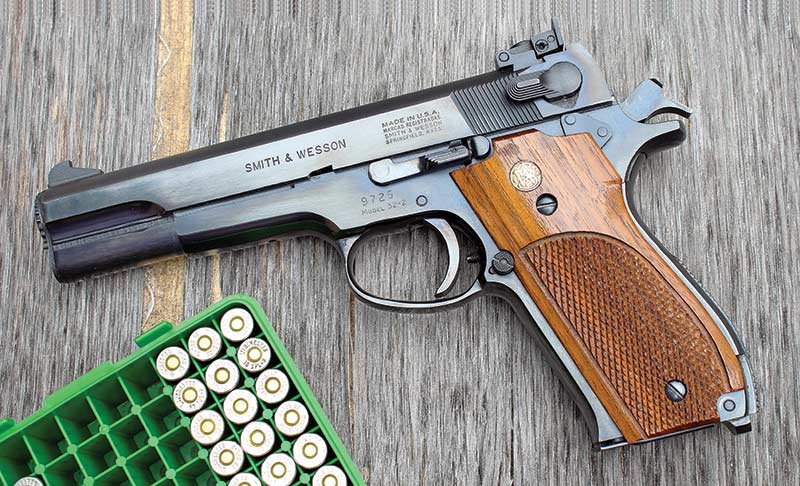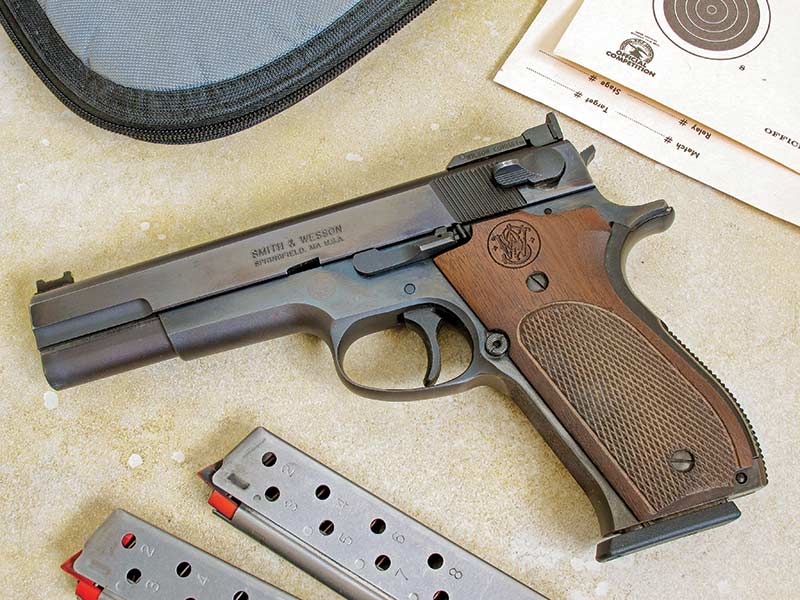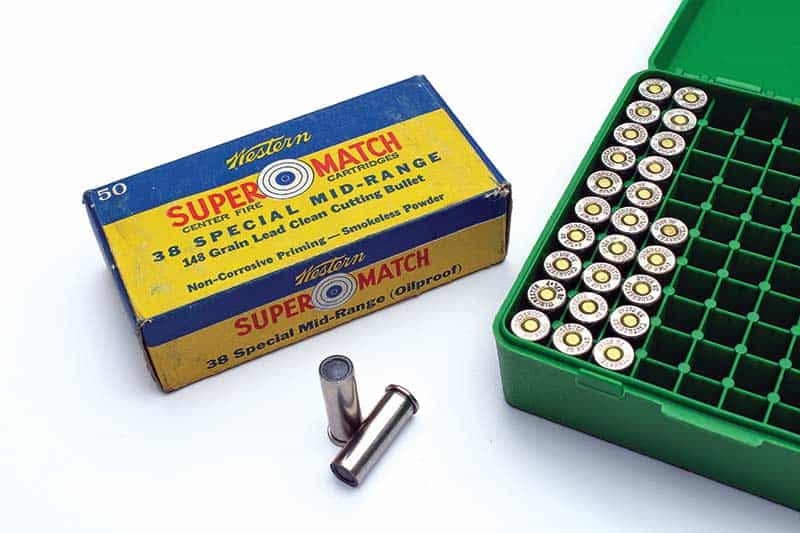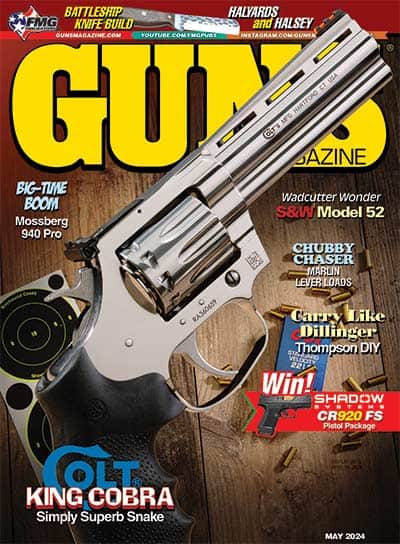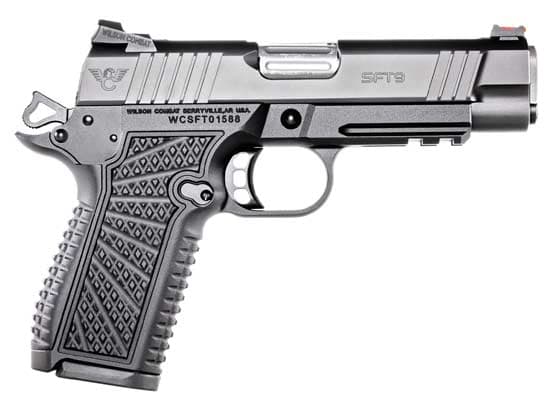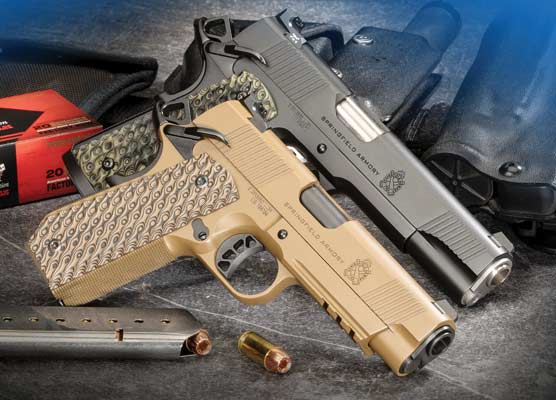S&W Model 52
The .38 Special In An Autoloader?!?
Today, most of us are pretty familiar with revolvers chambered for cartridges normally reserved for semi-autos. Both S&W and Ruger now catalog a handful of revolvers in 9mm, which have garnered enthusiastic buyers due to the caliber’s affordability and availability. Long before that, S&W, Colt and Ruger all produced revolvers in .45 ACP.
But what if I told you about a semi-auto made to feed and fire a revolver round? Although it’s not the only handgun with such a distinction, the S&W Model 52 is hands down my favorite, and it’s arguably the most interesting.
Background
First, a little historical context as to why S&W would bother with the endeavor. During the heyday of Bullseye shooting, competitors squared off in distinct courses of fire for .22 LR, .45 ACP, and any centerfire caliber of the shooter’s choice. Some opted to double down and use a .45 caliber 1911 for the centerfire stage as well, though others used whichever non-rimfire handgun they could shoot the best.
Historically, this latter group of shooters almost always picked a revolver in .38 Special — the Colt Officer Model Target and S&W’s K-38 “Target Masterpiece” (later, the Model 14) were the most popular choices. Shooters have long known the .38 special is an inherently accurate round, and perhaps no more accurate handgun load exists than the 148-grain wadcutter bullet that dominated the competitive landscape of decades past.
At least mechanically, the .38 wadcutter has three things going for it. First, the bullet is typically seated much deeper into the case, allowing for more uniform and less position-sensitive powder ignition. Second, there’s more surface area of the bullet engaging with the rifling, ensuring greater projectile stability. Third, recoil is typically minimal.
Now, wouldn’t it be neat to get these qualities into an autoloading handgun? Both the U.S. Army Marksmanship Unit and S&W thought so. While I’m leaving out the history of the .38 AMU cartridge and S&W’s experimental 52A, suffice it to say by 1961 S&W had solved the engineering challenge of getting .38 wadcutters to feed through a semi-auto, assuming the projectiles were seated flush with the case mouth.
Naturally, it wasn’t enough to chamber an autoloader in .38 Special and call it good. Indeed, the rest of the gun had to meet the exacting demands of the most talented competition shooters. As a result, the Model 52 may be the best fit-and-finished handgun Smith & Wesson ever manufactured. The slide-to-frame fit is glass smooth, and the subtly flared barrel is secured by a special bushing resulting in a rock solid and consistent lockup.
The result was a gun ready for Bullseye right out of the box. S&W’s accuracy standard was a 5-shot group of 2″ at 50 yards. My trigger breaks exactly at 2.5 lbs. — and yes, this is the factory weight
Range Time
The experience of shooting a Model 52 is, in a word, sublime. With the classic 148-grain wadcutter load propelled by 2.7 grains of Bullseye, the gun recoils gently in the hand and returns to battery with buttery smoothness. There is nothing hitchy, mushy, or jerky about the operation of this pistol. Nothing squeaks, clanks, or rattles. It’s evident the Model 52 is a product of S&W’s very best gunsmiths.
Believe me when I say no other handgun I own shoots this well. The gun does whatever it can to punch a hole right over the top of the front sight. Should you miss, the fault is entirely your own as absolutely nothing gets in your way, ergonomically, functionally, or mechanically.
It’s not for everyone, of course. The 52 was designed to be the gun to beat in a discipline that’s almost antithetical to today’s most popular shooting sports. Its 5-round magazine further underscores this is not a “go fast” kind of pistol. Additionally, you’ll have a hell of a time trying to find flush-seated, “midrange” .38 wadcutter ammunition on store shelves. As a result, the Model 52 is basically a gun for reloaders only.
Naturally, these qualities tend to be dealbreakers to a great number of shooters. However, they’re also the reason why a shootable example of an S&W Model 52 should only set you back about a thousand dollars. For this price, I absolutely guarantee you will not be able to find a more accurate, better-made pistol. I would also contend it’s worth learning how to reload purely to supply this superb gun with cheap ammo.
S&W produced the Model 52, including the “dash-one” and my “dash-two” version pictured here, until 1993 at which point the tooling was worn and the popularity of Bullseye had waned significantly. Indeed, most shooters by then had gravitated to more action-based competitions like IPSC. Some might argue the Model 52 is a relic of a time since passed. However, I’d contend any gun providing me with gilt-edged accuracy and pure ease of shooting will forever have a place in my safe.
